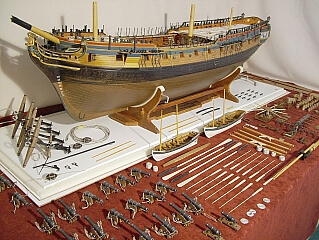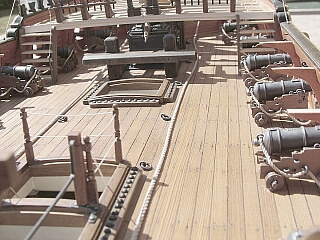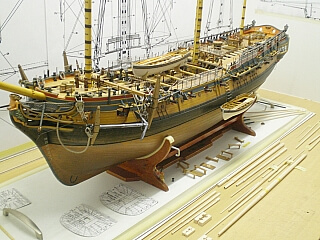⚓ H.M.S. PANDORA ⚓
 24-gun Porcupine-class sixth-rate frigate 1779-1791
24-gun Porcupine-class sixth-rate frigate 1779-1791


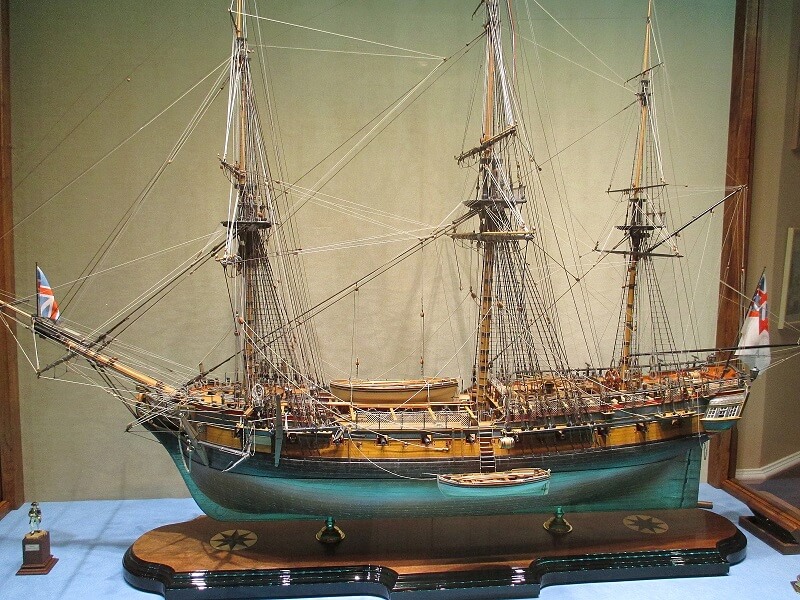
 H.M.S. PANDORA fregatt (Vikipedia)
H.M.S. PANDORA fregatt (Vikipedia)

A HMS Pandorát, Edward Edwards irányítása alatt, 1790. november 7-én indították útjára a Bounty és a lázadók megkeresésére. A Pandora a szokásosnál kétszer nagyobb legénységet szállított, hogy legyen elég ember a Bounty hazahozatalára. Edwards kapitány rendkívül kegyetlen ember hírében állt, aki szörnyen bánt el a lázadókkal.
A Pandora 1791. március 23-án érte el Tahitit. A Bounty négy embere ment fel a Pandorára, és további tízet tartóztattak le néhány héten belül. Ezt a tizennégy embert a Pandora belsejébe, egy mocskos, levegőtlen és patkányokkal teli helyre zárták, amelyet a bebörtönzöttek Pandóra szelencéjének neveztek.
1791. május 8-án a Pandora elhagyta Tahitit. Három hónapot töltöttek azzal, hogy a Tahititól nyugatra fekvő szigeteken keressék a Bountyt. Majd nyugatnak tartott a Torres-szoroson át, ahol azonban a Pandora zátonyra futott, 1791. augusztus 29-én. A hajó másnap süllyedt el.
A legénységből 31-en és négy lázadó (Skinner, Sumner, Stewart és Hillbrandt) vesztek oda. A hajó maradék 89 embere és tíz lázadó négy kisebb csónakon Timor felé evezett, ironikusan ugyanúgy, ahol Bligh tette. 1791. szeptember 16-án érkeztek meg Timorra.
Mindent összevetve az angol haditengerészet keveset foglalkozott a lázadók és Christian Fletcher kézre kerítésével, mivel a briteknek rövidesen égetőbb gondjai támadtak. Franciaországban kitört a forradalom, amely elleni támadásban az angolok is részt vettek, s végül a forradalom elleni háború a véres napóleoni háborúkba csapott át.
This model is nice sample of how is possible to make a real looking model, a perfect work.
There are no compromises regarding the workmanship.
See the photos to see the reality.
 Tudnivalók a modellről
Tudnivalók a modellről

☞ 1995. 05.21-2014.10.05 között épült ( kb 20.000- munkaóra)
☞ Minden alkatrész egyedi gyártású.
☞ A kötélzet kb 400 m fonott anyagból és több mint 1000 db csigából, horogból, gyűrűből áll.
☞ Az elhasznált cérnák orsóit eltettem ezeken rajta van a hossz, kb. 14 km alapanyagot használtam el!! (Próba + selejt.)
☞ Faanyagok: dió, hárs, vörös fenyő, körte, jávor, cseresznye, tölgy
☞ Más anyagok: vörösréz, sárgaréz+ fotómaratások.
☞ Terv: John McKay & Ron Colemann: The 24-gun Frigate Pandora
(Anatomy of the ship series)
Gémes Attila
 About the model ship
About the model ship

☞ Built bettween 21.05.1995-05.10.2014 in approximately 20.000 work hours !
☞ Every piece of the model is handmade, scratchbuilt.
☞ The riggings contains around 400 m ( 1.350 feets) of handmade spun roopes and more than 1000 pieces of shivers, pulleys, hooks and rings.
☞ There are kept the used stem reels, so based on this: have been used in total of 14 km (46.000 feets) of material for ropes and cords production
☞ Woods used: walnut, linden, redwood, pear, maple, cherry, oak
☞ Other materials: red copper, brass and photo echtings.
☞ Original plans and drawings : John McKay & Ron Colemann: The 24-gun Frigate Pandora
(Anatomy of the ship series)
Gémes Attila
 H.M.S. PANDORA 1779-1791
H.M.S. PANDORA 1779-1791

On March 16, 1790, Lt. Commander William Bligh reported the mutiny on the HMS Bounty to the British Admiralty in London.
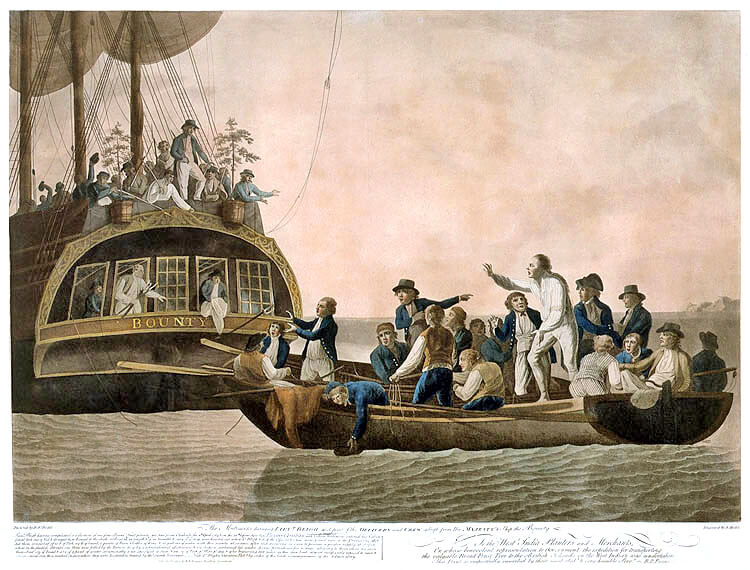
The mutineers turning Bligh and some of the officers and crew adrift from His Majesty's Ship Bounty, 29 April 1789. By Robert Dodd.
King George III immediately commanded that the Bounty be returned and the mutineers brought to justice.
The man chosen to lead this mission was Edward Edwards (1742-1815), a Captain with nearly 30 years at sea. In 1782 he had ruthlessly put down a mutiny on his own ship, the HMS Narcissus; of the sailors he didn't have killed on the spot, six were later hanged and two flogged to death. This incident instilled in him a murderous hatred of mutineers and, in the eyes of the Admiralty, made him uniquely qualified to hunt for the Bounty gang.
Rather than the "two sloops" recommended by the King, he was given command of a medium-size warship, the HMS Pandora. Built in 1779, it was a 500-ton, 24-gun frigate with a crew of 120.
The search party sailed from Portsmouth on November 7, 1790; rounding Cape Horn into the Pacific, the Pandora reached Tahiti on March 15, 1791. Within six weeks Edwards had rounded up all 14 of the surviving Bounty men on the island:
But there was no sign of ringleader Fletcher Christian, or the Bounty.
Edwards imprisoned all the Bounty men, a grave injustice because he knew which ones were innocent or guilty (through Bligh's published account of the mutiny, and through the presence on the Pandora of Bounty survivor Thomas Hayward). Worse still, they were brutally chained inside a brig of the Captain's own design: "Pandora's Box", a small wooden cage above deck with almost no ventilation and crawling with vermin.
After four months of fruitlessly scouring the South Seas, Edwards gave up the search and set sail for England. Around 11:00 on the night of August 29, 1791, the Pandora crashed upon the northern tip of the Great Barrier Reef. The crew managed to refloat the ship but its hull was too badly damaged to remain seaworthy. By mid-morning the Pandora was listing perilously on its starboard side and Edwards finally gave the order to abandon ship, making sure he was the first one into a lifeboat. He also instructed that the Bounty men be left to drown in their chains. William Moulter, Boatswain's Mate of the Pandora, heroically disobeyed this order and managed to free ten of the prisoners, but four, could not be saved.
Just after 10 AM on August 30 the Pandora sank into the Pacific, taking 31 of its crew and the four doomed Bounty prisoners with it. The survivors, crowded into four lifeboats, sailed for Timor much the way Bligh and his loyalists had done two years earlier; they arrived on October 4.
Edwards himself was court-martialled for the Pandora sinking, and while cleared of any wrongdoing he was never given another seagoing command. Thus one of the darkest chapters of British naval history was closed.
The remains of the Pandora were discovered in 1977; most of the hull lies buried in the soft sediment of the ocean floor, keeping it remarkably well-preserved. There have been several diving expeditions to the site and there is talk of attempting to raise the Pandora, a tomb for 35 unlucky seamen, and a memorial to man's cruelty and folly.
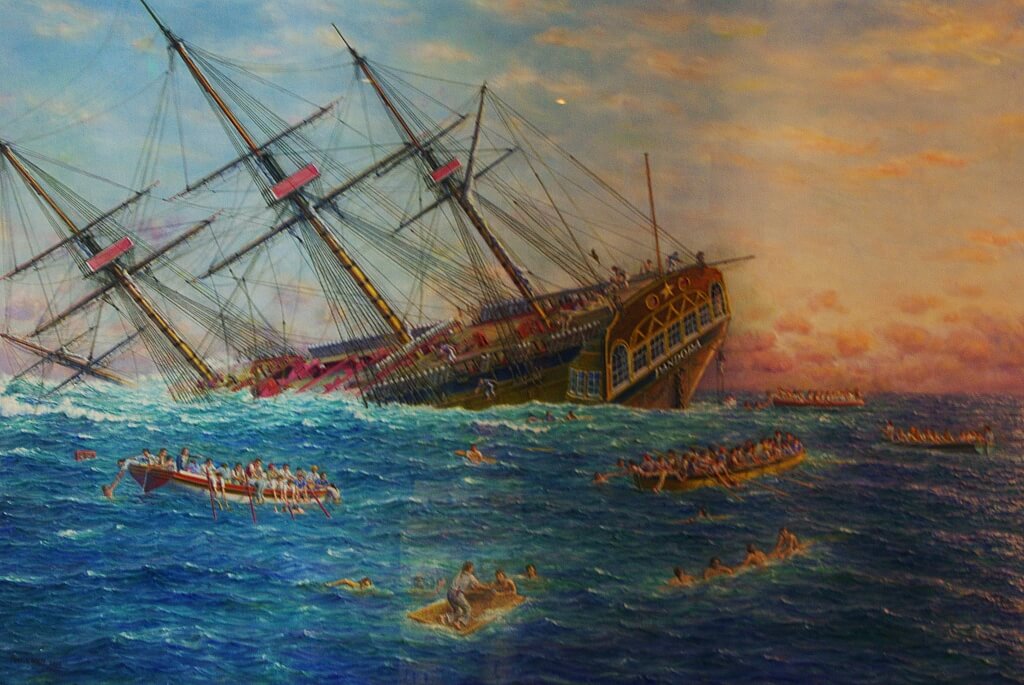
The sinking of the HMS Pandora on August 30, 1791. This painting was based on a watercolor by Peter Heywood, a Bounty prisoner who survived the wreck.
